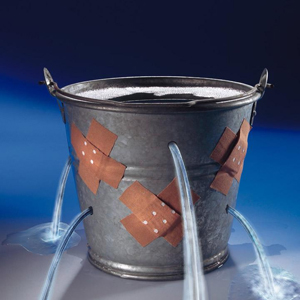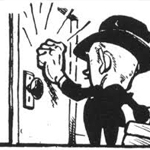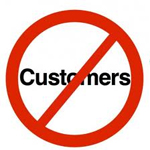 With Newsletter Marketing Systems recently purchasing Strive Designs (my graphic design & print business), it has made me look close and hard at the numbers in the business.
With Newsletter Marketing Systems recently purchasing Strive Designs (my graphic design & print business), it has made me look close and hard at the numbers in the business.
Over the past 2 and a half years, Zac and I have been juggling a couple of businesses each, and slowly we have been dedicating more and more time into Newsletter Marketing Systems. During these last 3 years, my turnover for Strive has been pretty stable, I noticed some customer had left, but I wasn’t concerned because my turnover hadn’t decreased much.
I expected the decrease in turnover because 2 years ago I intentionally stopped marketing to stop the flow of new customer for design & print work, I did get the occasional referral, but all in all, I had stopped my growth to focus on Newsletter Marketing Systems.
My gut feeling was that about 15% – 20% of my clients would leave each year and no longer purchase, and I felt that I replaced most of them with new customers… I never checked the numbers, and figured I was earning the same amount year to year, so wasn’t particularly concerned, because I was able to dedicate my time to Newsletter Marketing Systems.
I always looked at the dollars (The P & L’s) rather than the actual number of customers. But the other day I did… And, I’ve gotta say, it was quite a shock when I did the calculations.
| Year | Total Clients | Existing Clients | Clients Lost | New Clients | Churn Rate |
| 2010 | 146 | – | – | – | |
| 2011 | 128 | 101 | 45 | 27 | 30.8% |
| 2013 | 101 | 79 | 49 | 22 | 38.2% |
As you can see, over the past two years I have lost 30-40% of my clients each year! DOUBLE what my gut feeling was, and I’ve only added about half of them back through referral.
Zac and I like to use the analogy of a leaking bucket to describe customer churn. Your business is the bucket, and the water you put in the bucket is your customers. Unfortunately every business has a few holes in it and some clients leak out, they go to a competitor, move away, are unsatisfied or there is something that stops them from continuing to purchase.
The bigger the holes in your bucket (business), the more water (customers) you need to add.
So what now? What about growth for 2014? I want to grow my print & design customers by 20%, I’m going to start marketing again!
My business has about 100 customers, so 20% growth would be 120 customers by December 2014. Typically, most businesses would think, okay we need to add 20 new customers… But if we go by past churn stats, if I do nothing to combat it, I can expect to lose 30-40 customers over the next 12 months, which means I need to add 50-60 new customers this year to meet my growth goals.
I have 2 choices in 2014 to reach my goal:
1.) Keep my business as it is and just add more and more customers (60+), knowing that 30-40% of my existing customers will leave.
2.) Find a way to patch up the leaky bucket, so that I know the new customers I add are going to stay longer and less are going to leave.
Luckily Zac and I know have some solutions to fix the leaks in this bucket. We will be adding all my existing print customers to our monthly customer Newsletter list to build a relationship, deliver value and give them regular reminders that we are here. They will receive our e-zines, we will make follow-up up calls, send greeting cards, reward them with after-purchase gifts and of course give them the best customer service we can deliver.
Hopefully your bucket isn’t leaking too much… Consider though, if you haven’t done the actual calculations, it could be DOUBLE what your gut is telling you!
If you’d like to find out a little more about how customer churn is affecting your business and find out ways that you can better monetize your existing customers call us on 1300 120 106 or visit: www.lifetimecustomers.com.au to register for your free Existing Customer Opportunity Audit.
 Fresh out of university I started my ‘career’ in direct sales.
Fresh out of university I started my ‘career’ in direct sales. From a long time now we have been in the business of helping clients get more repeat business and referrals.
From a long time now we have been in the business of helping clients get more repeat business and referrals.